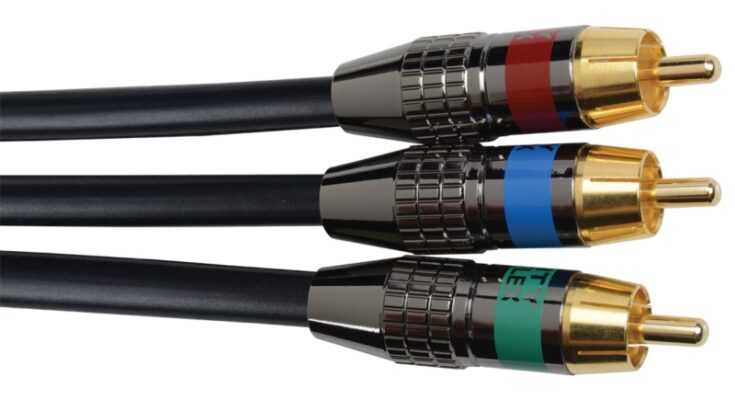If you are in the market for a new speaker cable but don’t know where to start, this article will help. This post will cover all you need about coaxial speaker cables and how to make your purchase confidently.
เว็บตรงสล็อต 2021 เครดิตฟรี สล็อตเว็บไซต์ใหญ่ สล็อตเว็บตรง ค้ำประกันความสนุกไม่เหมือนใคร นักพนันสามารถเล่น สล็อตเว็บไซต์ใหญ่ได้ โดยตรงไม่ผ่านเอเย่นต์ สล็อตเว็บไซต์ใหญ่ ที่มีระบบความปลอดภัยและก็เชื่อถือได้ เป็นเว็บไซต์ที่เก็บรวบรวมเกมสล็อตมาก พวกเราเป็น สล็อตเว็บไซต์ใหญ่อันดับ 1 เล่นง่าย ได้เงินจริงเนื่องจากพวกเราให้บริการโดยตรงผ่านผู้ครอบครอง จบปัญหาการถูกโกง ไม่จำเป็นต้องกลุ้มใจอีกต่อไปที่ให้บริการครบทุกค่าย
History of Coaxial Speaker Cable
The history of coaxial speaker cable is a long and complicated one. In the early days of radio, a coaxial cable was used to connect the antenna to the receiver. This type of cable is made up of two conductors that are separated by an insulator. The inner conductor is typically made of copper, while the outer conductor is made of aluminum.
Coaxial cable was first used for audio applications in the early 1900s. It wasn’t until the mid-1950s that coaxial cable became widely used for connecting audio components. The main reason for this was that it offered a much lower impedance than other types of cables at the time.
Coaxial cables are made of two conductors wound around each other, like coaxial speaker cables. Optical cables, on the other hand, consist of a single conductor surrounded by a dielectric material.
Today, coaxial cable is still used for connecting audio components, but balanced XLR cables have largely replaced it. However, there are still some instances where coaxial cable is the best option, such as when running long lengths of cable or when dealing with particularly high-frequency signals.
Why Use Coaxial Speaker Cable
Using coaxial speaker cables has many benefits over other types of speaker wire. Coaxial cable is very efficient at transmitting electrical signals with little signal loss. This makes it ideal for use in long runs or applications where high-fidelity sound reproduction is desired. Additionally, coaxial cable is much less likely to pick up electromagnetic interference than other types of speaker wire, making it an excellent choice for home theater systems and other audio/visual applications.
How Do You Connect Coaxial Cable?
If you’re looking to connect your coaxial cable, there are a few things you’ll need to do. First, you’ll need to find the end of the cable that has the exposed copper wire. This is typically the end that will be connected to the TV. Next, look at the back of your TV and find the coaxial input. It will likely be labeled with “ANT” or “RF.” Once you’ve found it, gently insert the end of the cable into this port until it’s snug. If your TV has a screw-on connection, you’ll want to twist the connector clockwise until it’s tight. Finally, sit back and enjoy your favorite shows!
Signal Quality and Losses
To maintain signal quality, keeping coaxial speaker cable runs as short as possible is essential. Any losses in the signal due to impedance mismatches or other factors will degrade sound quality.
Impedance mismatches are the number one cause of signal loss in coaxial cables. If the cable impedance does not match that of the load (the speakers), a portion of the signal will be reflected down the cable instead of being transferred to the load. This reflection causes a loss in signal power and can cause distortion. To avoid this, it is essential to use cables with low impedance and high-frequency response.
Another factor that can cause signal loss is attenuation. Attenuation is caused by the resistance of the wire and any connectors or splices in the line. The higher the resistance, the greater the attenuation and the greater the loss of signal power. To minimize attenuation, it is essential to use low-resistance wire and high-quality connectors.
Finally, another source of signal loss is interference. Electromagnetic fields from other electrical devices, RF signals from wireless devices, or static electricity build-up on the surface of the wire itself can cause interference. To minimize interference, it is essential to use shielded cables and keep runs as short as possible.
What is the Difference Between Coaxial Speaker Cable and Analog Audio Cables?
A coaxial speaker cable is a cable used to connect speakers to an audio system. The term “coaxial” refers to the fact that the cable consists of two conductors that are wound around each other. The inner conductor is typically made of copper, while the outer conductor is made of aluminum.
Analog audio cables connect audio components to speakers, such as amplifiers and receivers. These cables can be either coaxial or optical. Coaxial cables are made of two conductors wound around each other, like coaxial speaker cables. Optical cables, on the other hand, consist of a single conductor surrounded by a dielectric material.
Conclusion
As you can see, there is a lot of misinformation about coaxial speaker cables. The truth is that this type of cable is just as good as any other speaker cable, and it doesn’t matter which one you choose. So don’t be fooled by the myths and misinformation — get the facts straight so you can decide which type of speaker cable is right for you.




